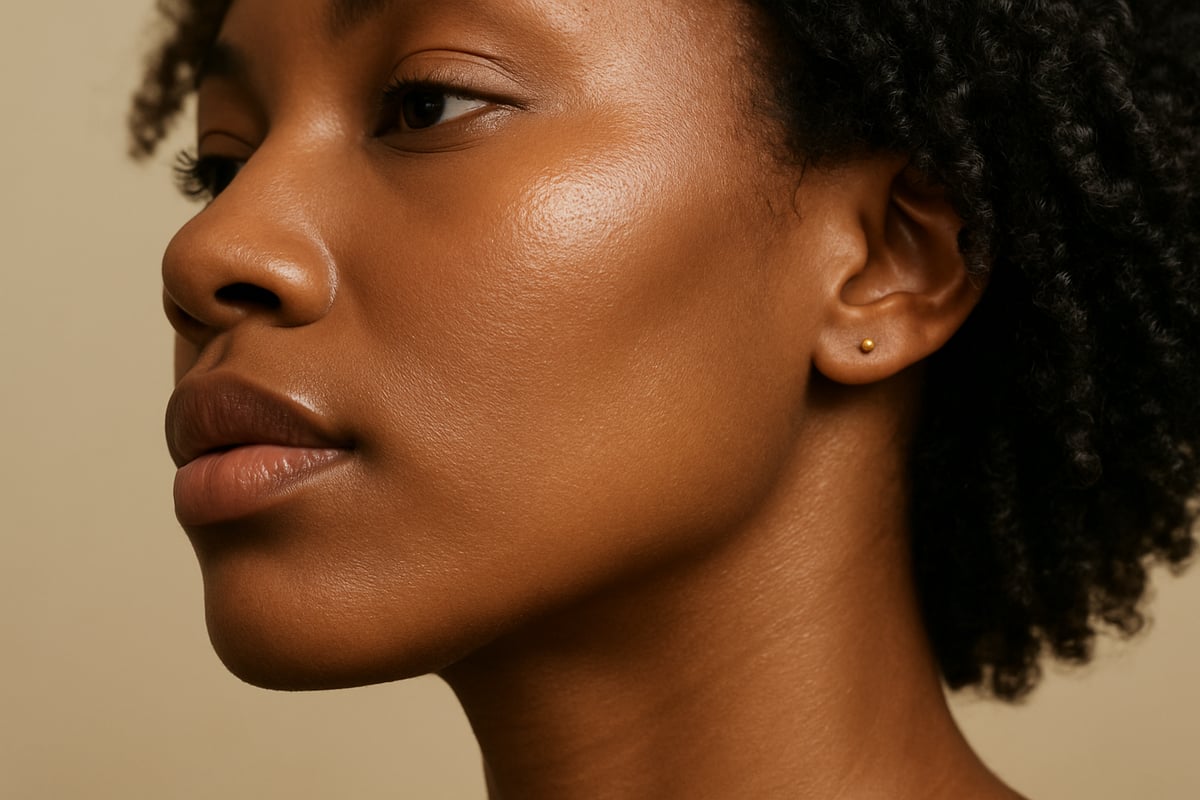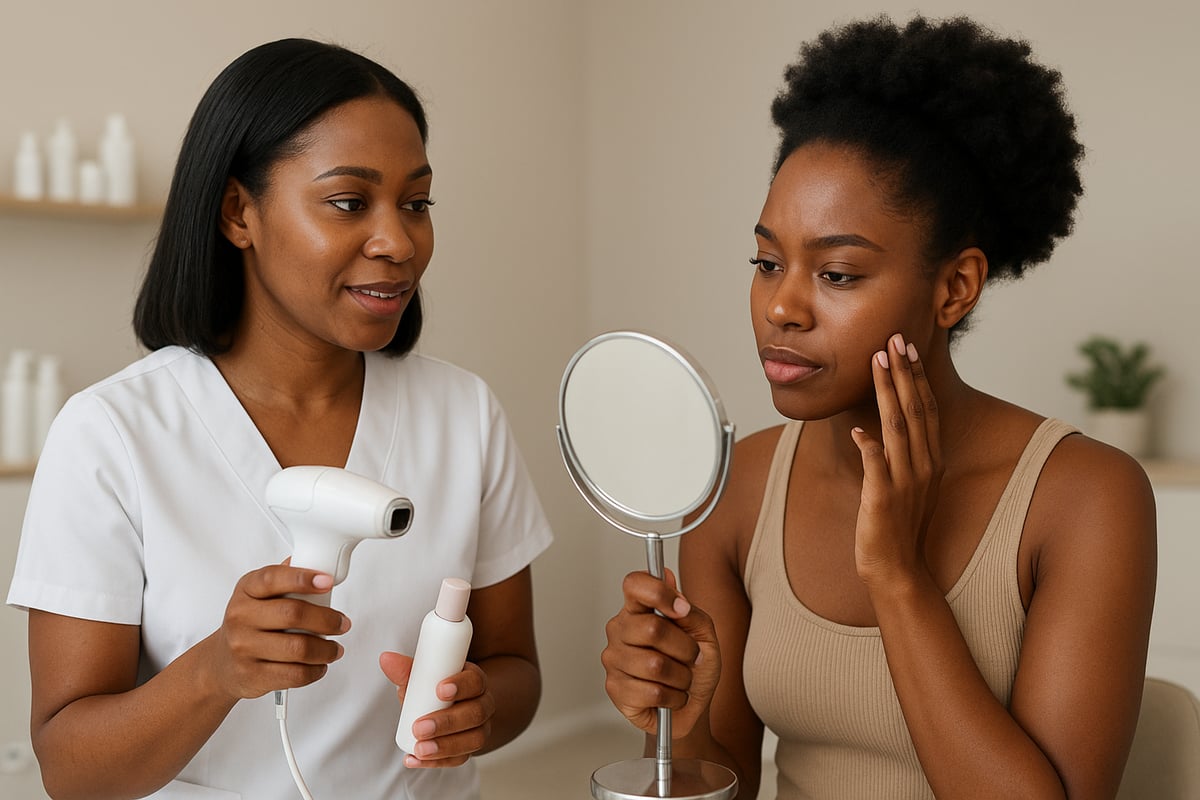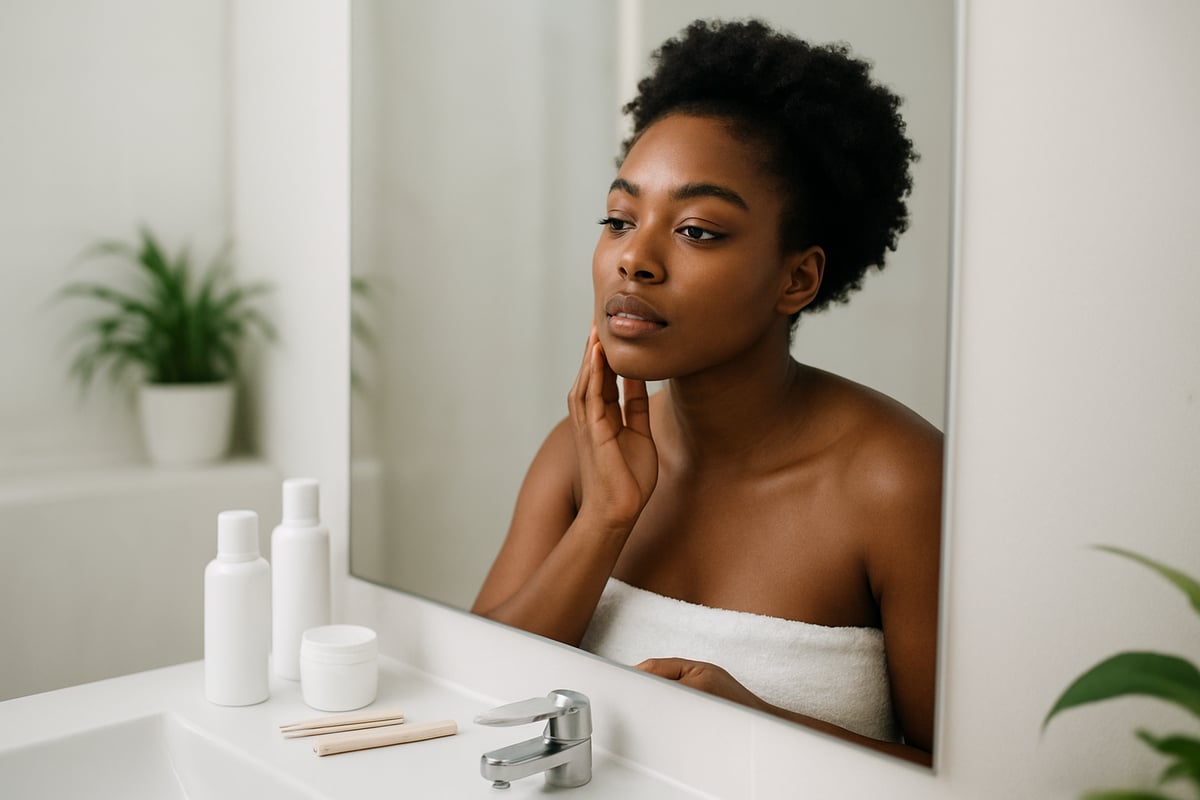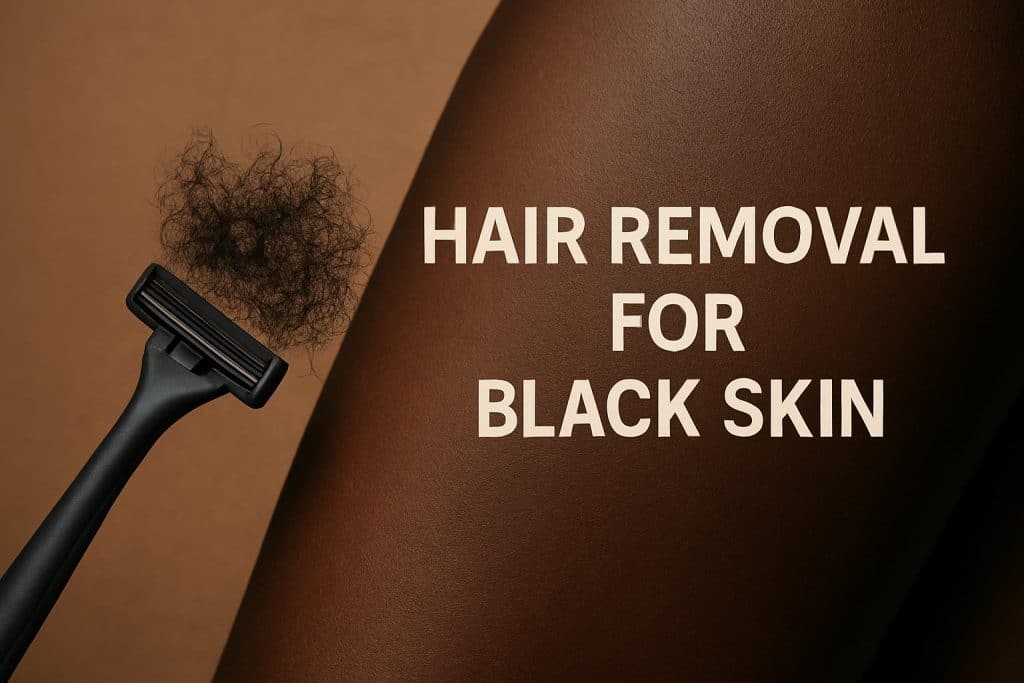Many people searching for hair removal for Black skin encounter unique challenges and persistent misconceptions that can lead to irritation, discoloration, or scarring. The truth is, not all solutions are created equal, and Black skin deserves specialized, evidence-based care.
This expert guide will help you navigate hair removal for Black skin by exploring the science behind skin and hair, comparing methods, sharing safety tips, and highlighting the latest technology for radiant, smooth results.
Ready to achieve healthy, confident skin? Discover actionable advice tailored to your needs and learn how to choose the safest, most effective options in 2025.
Understanding Black Skin and Hair: What Makes It Unique?
Understanding the nuances of Black skin and hair is essential for anyone seeking safe and effective hair removal for black skin. Unique biological factors, including melanin content and hair structure, make standard advice less effective and sometimes risky. By exploring these differences, you can make more informed choices about the best hair removal for black skin.

The Science of Melanin and Hair Growth
Black skin contains higher levels of melanin, the pigment responsible for skin color. This increased melanin offers some protection from UV radiation but also makes the skin more sensitive to trauma and pigmentation changes. The structure of hair in Black individuals is often more tightly coiled, with a curved follicle shape. This unique structure can lead to higher hair density in certain areas and a greater risk of hairs curling back into the skin.
Because of these factors, Black skin is more likely to experience hyperpigmentation and scarring after irritation or injury. Scientific studies confirm that post-inflammatory hyperpigmentation (PIH) and ingrown hairs are more prevalent in Black skin. Consider the following data:
| Condition | Prevalence in Black Skin | Prevalence in Lighter Skin |
|---|---|---|
| Ingrown Hairs | 60–80% | 15–30% |
| Post-inflammatory Hyperpigmentation (PIH) | 30–50% | 10–20% |
Understanding these differences is the first step in choosing the right hair removal for black skin and avoiding unwanted side effects.
Common Hair Removal Challenges for Black Skin
Many traditional hair removal methods can increase the risk of irritation, PIH, and scarring for Black skin. Common challenges include:
- Ingrown hairs (pseudofolliculitis barbae)
- Keloid formation
- Increased sensitivity to chemical and heat-based treatments
For example, shaving and waxing often cause razor bumps in Black men and women, as curly hair grows back into the skin. The use of harsh products or improper technique can trigger inflammation, leading to pigmentation changes or even keloid scars.
To minimize these risks, it is crucial to choose hair removal for black skin that is designed to reduce trauma. Specialized products, gentle techniques, and professional guidance can make a significant difference. Advances in technology, such as Laser hair removal for dark skin, have led to safer, more effective options tailored to the unique needs of Black skin.
Myths and Misconceptions
One common misconception is that all hair removal methods are equally safe across skin types. However, this is rarely true. Many “universal” solutions fail to consider the higher melanin content and specific hair growth patterns found in Black individuals.
Myths to watch out for include:
- All lasers work the same for everyone
- Natural remedies are always safe
- Ingrown hairs are unavoidable
In reality, tailored advice is vital for optimal results and skin health. Effective hair removal for black skin requires in-depth knowledge of both skin biology and the latest techniques. By seeking personalized recommendations, you can avoid unnecessary risks and achieve smooth, radiant skin.
Comparing Hair Removal Methods: Pros, Cons & Suitability for Black Skin
Choosing the right hair removal for black skin can be challenging due to unique skin and hair characteristics. Not all methods are equally safe or effective, and some can increase the risk of irritation or pigmentation issues. Understanding the pros and cons of each option empowers you to make informed decisions for your skin’s health.

| Method | Pros | Cons | Suitability for Black Skin |
|---|---|---|---|
| Shaving | Accessible, affordable, quick | High risk of ingrown hairs, irritation | Use with caution, proper technique |
| Waxing & Sugaring | Longer results, less regrowth | Burns, PIH, skin lifting possible | Gentle waxes, patch test crucial |
| Depilatory Creams | Painless, fast | Chemical burns, pigmentation changes | Sensitive formulas only |
| Threading & Tweezing | Precise, no chemicals | Pain, risk of scarring | Best for small facial areas |
| Laser Hair Removal | Long-term reduction | Historic risks, new tech safer | Only with suitable devices |
| Electrolysis | Permanent, all hair colors | Time-consuming, potential scarring | Expert needed for safe results |
| Natural Remedies | Gentle, easy at home | Limited evidence, variable results | Caution with untested ingredients |
Shaving
Shaving is often the most accessible hair removal for black skin, offering immediate results with low upfront cost. However, curly hair texture increases the risk of hairs curling back into the skin, causing painful ingrown hairs and razor bumps.
To minimize irritation, use a single-blade razor and shave in the direction of hair growth. Always soften hair with warm water first and apply a moisturizing, fragrance-free shaving cream. Replace blades regularly to prevent infection.
Despite its convenience, shaving is best reserved for those who do not experience frequent ingrown hairs or post-inflammatory hyperpigmentation.
Waxing & Sugaring
Waxing and sugaring offer longer-lasting hair removal for black skin, as they remove hair from the root. These methods can lead to smoother skin and may reduce the number of ingrown hairs compared to shaving.
However, the risk of burns, skin lifting, and PIH is higher if wax is too hot or if harsh products are used. Always request a patch test and opt for hypoallergenic or sugar-based waxes. Professional application is recommended to avoid unnecessary trauma to sensitive skin.
For best results, exfoliate gently before waxing and avoid sun exposure for several days after treatment.
Depilatory Creams
Depilatory creams are a quick and painless choice for hair removal for black skin, dissolving hair at the surface. Yet, the chemicals in these creams can cause allergic reactions, burns, and pigmentation changes, especially on sensitive skin.
Select formulas specifically designed for sensitive skin and always perform a patch test 24 hours before full use. Never leave the cream on longer than directed. Data shows that adverse reactions are more common in darker skin tones, so caution is essential.
If you notice redness, stinging, or discoloration, discontinue use and consult a dermatologist.
Threading & Tweezing
Threading and tweezing provide precise hair removal for black skin, making them ideal for shaping eyebrows and removing stray facial hairs. These techniques do not involve chemicals, reducing the risk of allergic reactions.
However, repeated trauma to the follicle can lead to folliculitis or scarring, particularly in areas prone to keloids. Always sanitize tools before use and limit tweezing to small areas. Pain can be managed with a cool compress after treatment.
Threading is best performed by an experienced technician to ensure safety and effectiveness.
Laser Hair Removal
Laser hair removal for black skin has advanced significantly, offering long-term reduction with less maintenance. Early lasers often caused burns and pigmentation changes in darker skin, but modern devices like Nd:YAG and diode lasers are much safer.
It is vital to choose a clinic with experience in treating Black skin and to inquire about the specific laser used. According to a Laser hair removal for darker skin review, newer technologies have greatly improved safety and results for darker skin types.
Multiple sessions are required, and results vary by hair texture and color. Always request a patch test before beginning treatment.
Electrolysis
Electrolysis is the only FDA-approved permanent hair removal for black skin. It works on all hair colors and types by destroying the follicle with an electric current.
While highly effective, electrolysis is time-consuming and may cause scarring or keloids if performed improperly. Seek out a licensed, experienced electrologist familiar with Black skin.
A consultation is essential to discuss expectations and minimize risks. Electrolysis is often chosen for small areas or stubborn hairs.
Natural & At-Home Remedies
Natural and at-home remedies for hair removal for black skin, such as turmeric masks or sugar scrubs, appeal to those seeking gentle, chemical-free options. However, scientific evidence supporting their effectiveness is limited.
DIY methods can cause irritation or infection if ingredients are not sterile or if the skin is sensitive. Always research ingredients and patch test before use.
While some find success with these approaches, professional guidance is recommended for persistent or widespread hair concerns.
Laser Hair Removal for Black Skin: Safety, Technology & Results {600}
Laser hair removal for black skin has transformed dramatically in recent years, offering safer and more effective results than ever before. For those with deeper skin tones, understanding how this technology works, selecting the right provider, and following proper aftercare are essential steps for achieving smooth, radiant skin with minimal risk.
How Laser Hair Removal Works
Laser hair removal for black skin relies on using concentrated light to target and disable hair follicles. The device emits a specific wavelength of light absorbed by the melanin within the hair shaft. This process heats the follicle, damaging it and reducing future hair growth.
For individuals with Black skin, the challenge comes from having higher melanin levels in both the hair and the surrounding skin. Traditional lasers sometimes could not distinguish between these, leading to burns or pigmentation changes. Today, advanced technology makes hair removal for black skin safer by selecting wavelengths that specifically target hair without affecting the skin.
Advances in Laser Technology
Recent breakthroughs have made hair removal for black skin significantly safer. Devices such as the Nd:YAG laser and advanced diode lasers are now engineered for deeper skin tones. These lasers use longer wavelengths, which penetrate the skin without being absorbed by epidermal melanin, reducing the risk of burns and discoloration.
Clinical studies, such as those referenced in Advances in laser hair removal, confirm these new technologies provide higher efficacy and safety for people with Black skin. The CANDELA GentleMax Pro system is a standout, offering dual wavelengths and integrated cooling for added comfort and protection.
Choosing the Right Provider
Selecting a provider experienced in hair removal for black skin is crucial for safety and results. Not all clinics have the latest devices or the expertise to adjust settings for darker skin tones. During your consultation, ask about the type of lasers used and the practitioner’s experience with Black clients.
Look for clinics that perform patch tests, explain all possible side effects, and customize treatment plans. High ratings from other clients with similar skin tones are a strong indicator of quality care. Never hesitate to ask for before-and-after photos of previous patients with your skin type.
What to Expect: Procedure, Pain, and Results
During a session, your provider will clean the treatment area and may apply a cooling gel or use a device with integrated cooling. The laser emits short pulses of light, and you may feel a slight snapping sensation. Most people describe the discomfort as mild and tolerable.
Multiple sessions are required for optimal hair removal for black skin, as hair grows in cycles. On average, six to eight sessions spaced several weeks apart are necessary. After completing treatments, most people experience a 70 to 90 percent reduction in hair growth, with smoother skin and less irritation compared to shaving or waxing.
Risks, Side Effects, and How to Minimize Them
Common side effects of hair removal for black skin include temporary redness, swelling, and mild pigmentation changes. These are usually short-lived and resolve within a few days. Rarely, burns or long-lasting hyperpigmentation can occur if incorrect settings are used.
To minimize risks:
- Choose clinics with modern, appropriate lasers.
- Request a patch test before full treatment.
- Avoid sun exposure before and after sessions.
- Follow all aftercare instructions, including using soothing products and sunscreen.
If you notice persistent dark spots or irritation, consult your provider for guidance on treatment options.
Laser Hair Removal at New Skin Laser Clinic: Expert Care for Black Skin
New Skin Laser Clinic specializes in hair removal for black skin, using the CANDELA GentleMax Pro for safe and effective results. Their team customizes every treatment plan, ensuring the right laser settings and aftercare for your specific needs.

Clients benefit from personalized consultations, experienced estheticians, and a proven track record of treating diverse skin tones. The clinic’s convenient Toronto location and flexible pricing make it accessible for many. High satisfaction ratings reflect their commitment to delivering radiant, smooth skin while prioritizing safety for every individual.
Step-by-Step Guide: Preparing for Safe Hair Removal on Black Skin
Achieving smooth, healthy skin starts long before the first treatment. Proper preparation is essential for safe and effective hair removal for black skin. By following these expert-backed steps, you can minimize risks and reveal your most radiant complexion.

Step 1: Assess Your Skin and Hair Type
Begin your journey by understanding your skin’s unique needs. Identify your Fitzpatrick skin type, which helps predict how your skin will react to sun, products, and treatments. Black skin often falls into types IV to VI, which are more sensitive to trauma and pigmentation changes.
Evaluate your hair’s curl pattern, density, and thickness. These factors influence the best approach to hair removal for black skin. Recognizing if you are prone to ingrown hairs or keloids will guide your method selection and aftercare routine.
Step 2: Consult a Qualified Professional
Seeking expert advice is crucial. A licensed dermatologist or experienced esthetician can recommend the safest options for hair removal for black skin. They will assess your history of pigmentation, scarring, and sensitivity.
Ask about their experience with diverse skin tones and request to see before-and-after results. For laser treatments, ensure they use devices proven safe for dark skin. For more guidance, refer to this article on laser hair removal safety for Black women to learn what to look for in a provider.
Step 3: Patch Testing and Sensitivity Checks
Always perform a patch test before trying a new product or procedure. Apply a small amount of the product to a discreet area, such as behind the ear or inner arm. Wait at least 24 to 48 hours to check for redness, swelling, or irritation.
Patch testing is especially important for chemical depilatories, waxes, and lasers. This step is vital for safe hair removal for black skin, as reactions can be more pronounced and longer lasting.
Step 4: Pre-Treatment Skincare Routine
Proper skincare prepares your skin for hair removal for black skin and reduces the risk of side effects. Gently cleanse and exfoliate the target area a day before treatment to remove dead skin cells and prevent ingrown hairs.
Moisturize with a fragrance-free, non-comedogenic lotion. Avoid sun exposure and harsh or active ingredients like retinoids and acids for at least 48 hours before your session to minimize irritation.
Step 5: The Hair Removal Process
Follow all professional or product instructions closely. For at-home methods, use sanitized tools and wear disposable gloves if possible. Always shave in the direction of hair growth to reduce trauma.
If using wax or sugar, check the temperature and test a small area first. For laser or electrolysis, trust only licensed professionals who specialize in hair removal for black skin.
Step 6: Immediate Aftercare
After your session, soothe your skin with aloe vera gel or a gentle, fragrance-free moisturizer. Avoid heat, friction, and tight clothing for at least 24 to 48 hours.
Do not apply makeup, scented lotions, or exfoliants to the treated area right away. Protect your skin from direct sun exposure to prevent pigmentation changes and irritation.
Step 7: Monitoring and Managing Side Effects
Keep a close eye on your skin for the first few days. Watch for signs of post-inflammatory hyperpigmentation, persistent redness, or infection.
If you notice dark spots, bumps, or scarring, consult a professional for targeted treatment. Prompt action helps maintain the results of hair removal for black skin and supports long-term skin health.
Preventing and Treating Common Side Effects: Ingrown Hairs, PIH & Scarring
Hair removal for black skin can bring unique side effects, including ingrown hairs, post-inflammatory hyperpigmentation (PIH), and scarring. Understanding why these issues occur and how to address them is essential for safe, long-lasting results. By following expert guidance, it is possible to minimize complications and maintain smooth, even-toned skin throughout your hair removal journey.
Understanding Ingrown Hairs
Ingrown hairs are especially common after hair removal for black skin due to tightly coiled hair shafts and curved follicles. When hair curls back into the skin, it can trigger inflammation and painful bumps. This issue is seen frequently with shaving and waxing.
To prevent ingrown hairs:
- Use gentle exfoliation methods, such as soft brushes or mild scrubs, to remove dead skin.
- Shave in the direction of hair growth with a single-blade razor.
- Avoid shaving too closely or dry shaving.
Products containing glycolic acid or salicylic acid pads can help reduce buildup and keep follicles clear. If bumps develop, avoid picking at them to prevent further irritation and scarring. Maintaining a consistent routine is crucial for healthy hair removal for black skin.
Post-Inflammatory Hyperpigmentation (PIH)
PIH occurs when inflammation from hair removal for black skin triggers excess melanin production, resulting in dark spots. This is a common concern for those with higher melanin levels, as even minor trauma can cause noticeable discoloration.
Treatment options for PIH include:
- Topical retinoids to speed cell turnover
- Vitamin C serums for brightening
- Professional chemical peels, which can be highly effective for stubborn pigmentation. Learn more about chemical peels for hyperpigmentation as a targeted solution.
Data shows that consistent use of these treatments can significantly fade spots over time. Always use sunscreen daily, as UV exposure can worsen PIH and delay healing.
Scarring and Keloids
Scarring, including keloids, is a higher risk for individuals undergoing hair removal for black skin. Keloids are raised, firm scars that extend beyond the original injury, and they can develop even from minor trauma in susceptible individuals.
To minimize scarring:
- Use gentle techniques and avoid aggressive removal methods.
- Seek professional help for persistent or severe scarring.
- Consider advanced options like professional laser skin resurfacing to smooth texture and reduce visible marks.
If keloids run in your family, inform your practitioner before any procedure. Early intervention is key for best results.
Home Remedies vs. Professional Treatments
Many people turn to home remedies for side effects after hair removal for black skin. While some over-the-counter products offer mild relief, their effectiveness is often limited for more severe issues.
Professional treatments, such as prescription creams, chemical peels, and in-office procedures, provide more reliable and faster results. Always consult a dermatologist or licensed esthetician if you notice persistent dark spots, scarring, or irritation. They can recommend a personalized plan for your skin type and hair removal for black skin needs.
Long-Term Skin Health
Maintaining healthy skin after hair removal for black skin requires ongoing care. Establish a routine that includes:
- Gentle cleansing and regular exfoliation
- Daily use of fragrance-free moisturizers
- Consistent sun protection with SPF 30 or higher
A proactive approach helps prevent recurrence of ingrown hairs, PIH, and scarring. With the right habits, you can enjoy smoother, clearer skin and maximize the benefits of hair removal for black skin.
Innovations and Trends in Hair Removal for Black Skin: 2025 and Beyond
The landscape of hair removal for black skin is evolving rapidly as technology and awareness progress. In 2025, individuals with Black skin have more options than ever before, with advancements that prioritize safety, customization, and inclusivity. Let us explore the most significant innovations shaping the future of hair removal for black skin.
Emerging Technologies
Technological breakthroughs are redefining hair removal for black skin. AI-guided lasers now adjust energy output in real time, reducing the risk of burns and pigmentation changes. At-home laser devices, specifically calibrated for darker skin, are gaining popularity, making professional-grade results more accessible.
A major leap forward is the increased use of diode lasers, which clinical research confirms are both safe and effective for Black patients. For example, a recent diode laser hair removal study demonstrates impressive outcomes with minimal side effects in individuals with dark skin tones.
| Technology | Benefit for Black Skin | Accessibility |
|---|---|---|
| AI-Guided Lasers | Custom safety settings | Clinics, Med Spas |
| At-Home Diode Devices | Professional results | Home use |
| Nd:YAG Lasers | Deep penetration, safety | Specialist clinics |
These innovations set a new standard for hair removal for black skin, offering safer and more effective options.
Personalized Hair Removal Solutions
The future of hair removal for black skin is personalized care. Genetic testing and advanced skin analysis now enable clinics to design bespoke treatment plans. By assessing individual melanin levels, curl patterns, and sensitivities, professionals can recommend the most suitable method for each client.
Digital consultations and AI-powered apps are making expert advice readily available. These platforms guide users through safe routines and product choices, ensuring hair removal for black skin is tailored, effective, and convenient.
Expect this trend toward personalization to expand, with more clinics and brands adopting data-driven approaches for optimal results.
Inclusive Product Development
Brands are increasingly recognizing the unique needs of hair removal for black skin. In 2025, the market features a growing array of depilatory creams, razors, and aftercare products formulated specifically for darker skin tones.
Leading companies invest in research to address common concerns such as post-inflammatory hyperpigmentation and ingrown hairs. Products with gentle ingredients, pH-balanced formulas, and anti-inflammatory agents are now the norm.
This wave of inclusivity ensures that hair removal for black skin is safer and more comfortable, reducing the risk of irritation and long-term skin issues.
Shifting Beauty Standards
Society’s perception of hair removal for black skin is also changing. The rise of body positivity and the natural hair movement has empowered many to embrace their natural features, including body and facial hair.
Rather than enforcing a single standard, beauty trends now celebrate choice and self-expression. Some opt for smooth, hair-free skin, while others proudly showcase natural hair texture.
This cultural shift encourages individuals to approach hair removal for black skin as a matter of personal preference, not societal pressure, leading to healthier attitudes and better overall skin health.
Expert Predictions for the Future
Looking ahead, experts predict continued innovation in hair removal for black skin. Dermatologists foresee even smarter laser systems, more effective topical treatments, and greater access to professional care for diverse communities.
Education and advocacy will play a key role. As awareness grows, more individuals will seek evidence-based guidance, reducing the prevalence of complications like hyperpigmentation and scarring.
Ultimately, the future of hair removal for black skin is bright, with ongoing advances ensuring safer, more inclusive, and empowering options for all.

